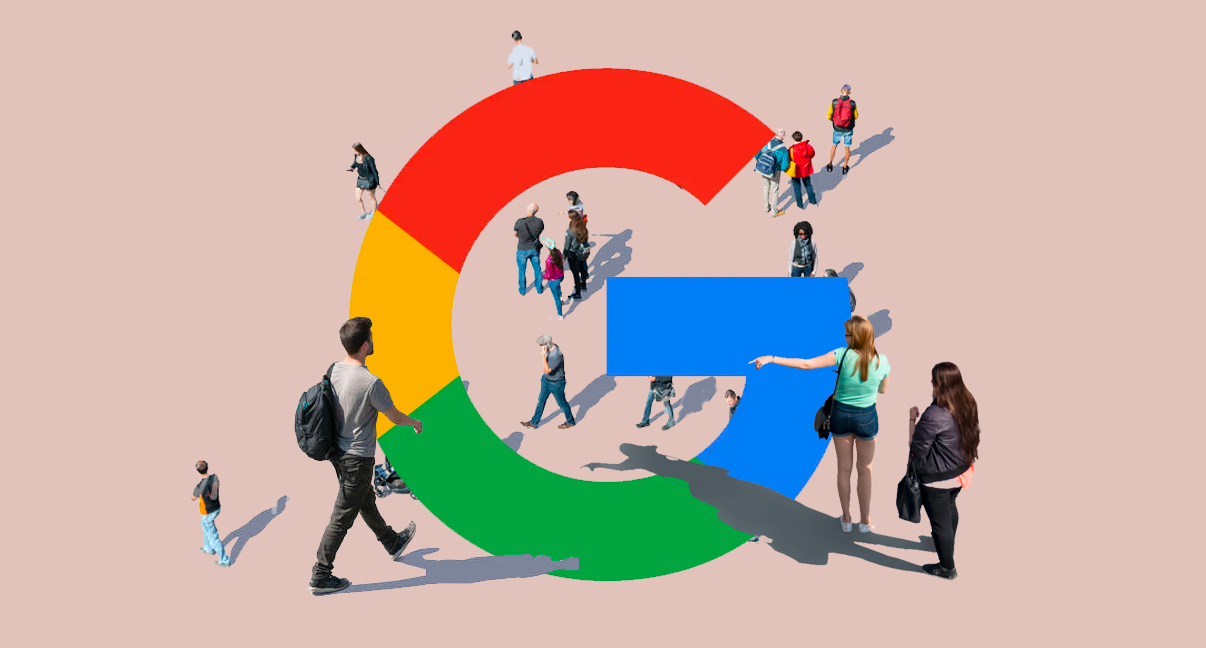
Google has announced it will be delaying killing off third party cookies for up to two years so digital advertisers and developers have time to test and build suitable alternatives, giving more breathing space for the provision of more privacy friendly ads.
Originally set to roll out in mid 2022, the Cookiepocalypse, as it’s been termed, was causing a huge stir in the digital space and across ad-tech platforms, even affecting the stock market.
According to CNBC: “Ad tech stocks surged Thursday after Google said it was pushing back its timeline to kill third-party tracking cookies from 2022 to 2023, giving the digital advertising industry more time to plan for more privacy-conscious targeted ads.”
“Several ad tech players saw stocks shoot up Thursday following the announcement. The Trade Desk shares were up nearly 15%, Magnite shares were up 9%, PubMatic shares were up more than 12%, Criteo shares were up nearly 12% in a 52-week high and LiveRamp shares were up 9%.”
According to CNET, the delay comes “amid intensifying pressure on Silicon Valley giants to fix the internet’s privacy problem”. Laws like Europe’s GDPR and the California Consumer Privacy Act (CCPA) target the data collection that Google and other companies want for fine tuning the advertisements they deliver.
In a recent client Lunch and Learn session, we explored what this all means and unpacked some of the thinking that can be applied when responding to these changes.
What are Cookies and how do they work?
A third-party cookie 🍪 consists of a tiny piece of data stored on a person’s computer that is created by a website other than the site that user is visiting.
Through a vast network of third-party cookies, advertisers can follow a person’s browsing history and create user profiles based off of the information these cookies collect. This enables advertisers to serve relevant, personalized ads across the web.
What is the Cookiepocalypse?
Repent, o ye ad-trackers, for the cookiepocalypse is nigh! (Dramatic!) 🍪💥
If Google had stuck to its original roadmap, by March 2022 Chrome would no longer allow websites to use third-party cookies, which are cookies that come from outside their own domains. This has been spurred-on by enhanced privacy advocacy.
However in the news today, Google says now it plans to phase out support for third-party cookies beginning by mid-2023, finishing in late 2023.
The change theoretically makes it vastly more difficult for advertisers to track your activities online & serve you targeted ads. (AKA for advertisers to target their customers).
Safari and Firefox have already blocked those cookies, but when it comes to market share, Chrome currently holds 48% overall browsing traffic and so its switchover is the big one!
Users are demanding greater privacy – including transparency, choice and control over how their data is used – and it’s clear the web ecosystem needs to evolve to meet these increasing demands.
Justin Schuh | Director of Chrome Engineering | Google
What are the impacts of the Cookiepocalypse?
- Businesses that rely solely on third-party cookies (& advertising channels that in-turn uses those cookies) are going to be hit the hardest.
- Essentially, understanding your users, their behaviour and the ability to apply these learnings to advertising (and creating hyper-focussed and well-targeted audiences), will become a bigger challenge than ever before.
A caveat: FLoC
Google’s answer in replacing individual identifiers is around aggregation and anonymisation, ‘hiding’ individuals in large groups of people with similar interests.
This is far from a new concept, but it is one that works and is often referred to as part of the Privacy Sandbox & FLoC (Federated Learning of Cohorts).
As a user moves around the web, their browser uses the FLoC algorithm to work out its “interest cohort”, which will be the same for thousands of browsers with a similar recent browsing history.
The browser recalculates its cohort periodically, on the user’s device, without sharing individual browsing data with the browser vendor or anyone else.
Essentially, FLoC is Google’s way of showing you adverts for things that it believes you are interested in.
Google claims the system is 95 percent as effective as third-party cookies. Interestingly, the delay in proceedings would imply that this isn’t quite up-to-speed yet.
But there are still things you can do to respond to this loss in Third-Party Cookies.
What can we do to prepare for the cookie-less future? (Now we have more time!)
FIRST BEAT’S THIRD:
- The decreased use of third-party cookies opens up a valuable opportunity for marketers to re-establish trust with their target consumers. Start to think about moving to a more first-party data approach.
- Companies that start to focus more on the gathering of first-party data on owned platforms, starting even with name, email address, or demographic information are more likely to turn this from adversity into opportunity.
- Marketers can, and should, be optimistic about the opportunity to pivot and utilise new and existing alternatives, giving even more power to the already huge value of CRM which can enable brands to connect with their customers & potential customers on a more 1:1 basis (rather than just hoping they’ll fit within their audience targeting via third-party tracking).
- Marketers must leverage this first-party data and other actionable consumer insights to create authentic messaging & content that they know will resonate with their intended audience, because they’ve done their homework.
ANALYSE SERVER SIDE
- Some clients have claimed to see impacts of this via potential inaccuracies in Google Analytics. BUT – GA is technically First Party! So, what we’re seeing here is people not accepting analytics cookies (usually implemented via a cookie consent bar or similar) which is actually an impact of GDPR/Cookie Law!
- In these circumstances, utilising some level of Server-Side Analytics has been the way to go. Most server/hosting setups enable fairly robust reporting on the key metrics such as sessions/users/pageviews etc.
- One challenge here is that this is only a fairer or more accurate representation of traffic-based stats, it’s not so useful at rectifying inaccuracies in traffic source or user journey data – however, there are increasing numbers of new web analytics platforms which operate by giving users anonymity whilst tracking their usage of your website (e.g. Matomo, Plausible, etc), and many CRM platforms such as HubSpot also use their own First-Party Tracking Cookies.
ANALYSE CUSTOMER BEHAVIOUR
- Honing in on consumer behaviours and sentiments are key elements to brand success.
- Incorporating behavioural analysis within a marketing strategy allows marketers to actively observe how consumers interact with their brands. These observations can be leveraged to understand influencing indicators.
- Owning the opportunity to build out consumer behavioural data sets can be an effective way to align with target markets. This will enable brands to identify strengths, problem areas, and opportunities to develop an impactful strategy.
- Use Research Technology (ResTech) – which enables market research, brand lift, and media measurement in order to identify shifting sentiments and help you accurately capture how your target demographics are feeling at any given moment. This is a term for the software and tools that help you target, deliver, and analyse your insights initiatives. Examples could include BrandWatch, Cision and Falcon.io
- Through targeted surveys & analysis, you can understand what makes your target consumers tick — a practice that is quite literally invaluable at a time when opinions seem unpredictable and are changing rapidly.
- You will notice a marked shift in businesses trying to gather more first-party data in the coming months.
NEVER FEAR:
- The cookieless future doesn’t have to be as scary and overwhelming as some may initially feel.
- There’s speedy technology innovation and development unfolding at speed, aiming to arm today’s marketers with the right tools and the right data to overcome this seemingly epic challenge. Although yet to prove itself, Google’s FLoC is going to have to fill the gap or Google will lose ad revenues over time.
- By nurturing strategies that help with audience identification and retention, and leveraging actionable consumer insights, brands will create, curate, and deliver messaging that better resonates with their target consumers.
- This, in turn, will lead to those higher conversion rates all marketers always strive for…
The key to cookieless marketing has been in our hands the whole time: it is to actively listen to the customer through more first-party methods.
Be sure to talk to us about this to explore how you might react to the cookieless future.
The delay is just a delay…
Although Google is allowing itself more time to develop and test privacy-preserving alternatives to third-party cookies (and for websites to adopt the changes), that is just a delay to the inevitable, the removal of third-party cookies from Chrome is still going to happen so being prepared is key.
Chrome Engineering Director Vinay Goel explained in a blog post:
“We need to move at a responsible pace, allowing sufficient time for public discussion on the right solutions and for publishers and the advertising industry to migrate their services.”
“This is important to avoid jeopardizing the business models of many web publishers which support freely available content.”
More time to prepare. Let’s talk.
If you’d like to explore how you can prepare for this new world of privacy-induced change, or just want to find out more about how this might impact your business, please get in touch, we’d love to hear about your business challenges and discover some wonderfully simple solutions.
Latest posts

5 reasons why we still need Wonder in an AI driven world
As an agency, we are grappling with the role and application of AI within our daily business activities, our client offering, and our future growth

The Power of Purpose and Impact on Business Growth
In a marketplace increasingly driven by values and social consciousness, the role of purpose and impact in business growth has never been more critical.

Three key benefits of integrating a sense of Wonder within your brand & marketing strategies
We love creating Wonder. It’s our passion and forms our client mission. However, in an age where your customers and clients are bombarded with constant information and countless choices, capturing attention and building lasting connections has become increasingly challenging. We all have to work harder to capture people’s attention.